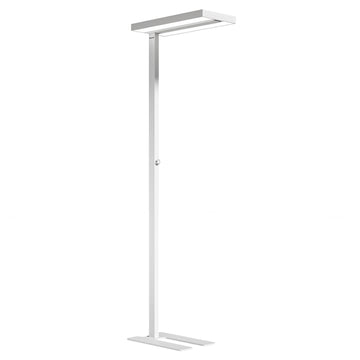The modern gaming landscape has evolved beyond single-platform experiences. Today's gamers seamlessly transition between PC battlestations, console gaming corners, and streaming setups, creating unique challenges for optimal lighting design. More than 80 percent of adults report using digital devices for over two hours per day, and nearly 67 percent say they use two or more devices simultaneously, making proper lighting setup crucial for both performance and health.
Understanding Multi-Device Gaming Environment Challenges
Multi-device gaming setups present distinct lighting challenges that single-platform configurations don't face. The primary obstacles include device interference, screen glare management, and maintaining consistent ambient lighting across different gaming zones.
Device Interference and Glare Issues
When multiple screens operate simultaneously—whether it's a primary PC monitor alongside a console display or streaming equipment—reflected light bounces between surfaces, creating visual distractions and eye strain. Blue light, which is emitted by digital devices, has been identified as a significant culprit. This high-energy light can penetrate deep into the eye, potentially causing damage to the retina and disrupting our natural sleep patterns.
Traditional overhead lighting often exacerbates these problems by creating harsh shadows and uneven illumination. The solution lies in strategic placement of specialized gaming lights that work in harmony with your multi-device setup.
Variable Lighting Needs Across Platforms
Different gaming platforms and genres require distinct lighting approaches. PC gaming typically demands focused task lighting to reduce monitor glare, while console gaming benefits from ambient lighting that enhances immersion without creating screen reflections. Streaming adds another layer of complexity, requiring consistent, flattering lighting for camera work while maintaining optimal gaming conditions.
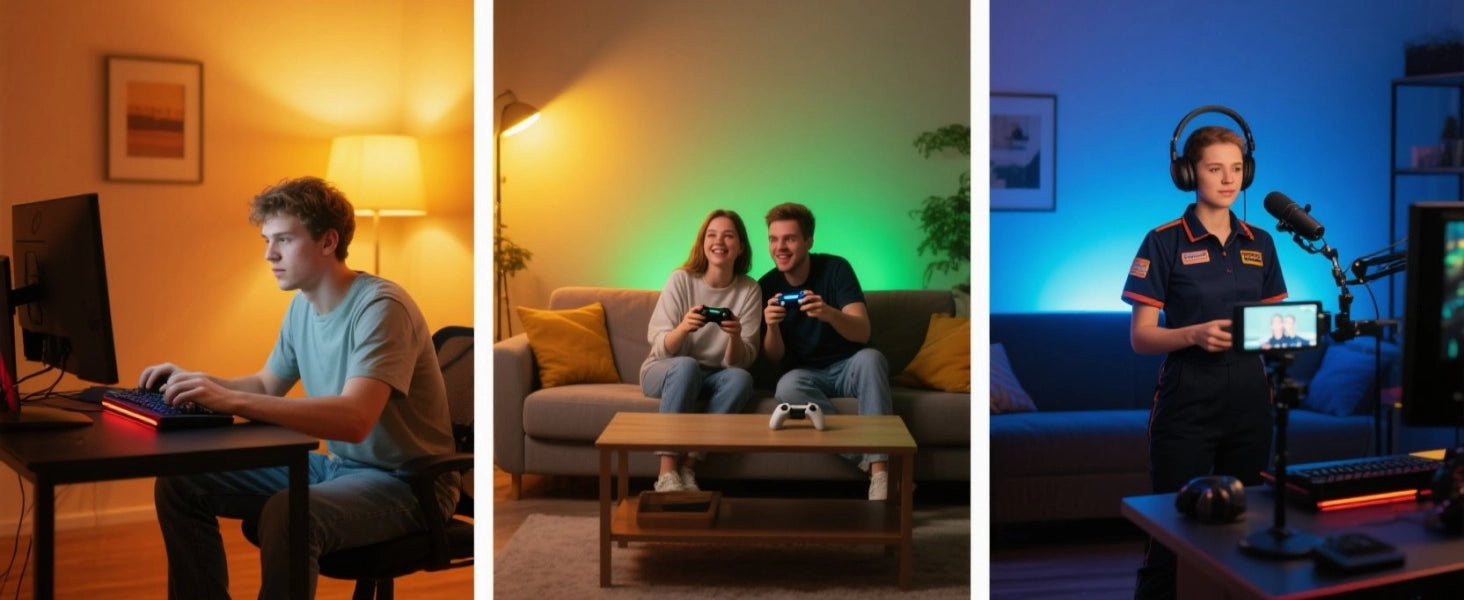
Strategic Lighting Solutions: HJ1 and F2 Synergy
The key to successful multi-device gaming lighting lies in combining targeted screen illumination with complementary ambient lighting. The Honeywell HJ1 desk lamp excels at providing precise screen lighting, while the Honeywell F2 floor lamp delivers comprehensive ambient illumination.
HJ1: Precision Screen Lighting
The HJ1 desk lamp addresses the most common multi-device gaming challenge: screen glare and eye strain. Its adjustable brightness and color temperature settings allow for precise calibration based on your primary display's characteristics. The lamp's focused beam design minimizes light spill onto secondary screens, preventing unwanted reflections.
For PC gaming setups, position the HJ1 approximately 18-24 inches from your primary monitor, angled to provide even illumination across your keyboard and mouse area without directly hitting the screen surface. This positioning reduces the contrast between bright screen content and dark surroundings, significantly reducing eye fatigue during extended gaming sessions.
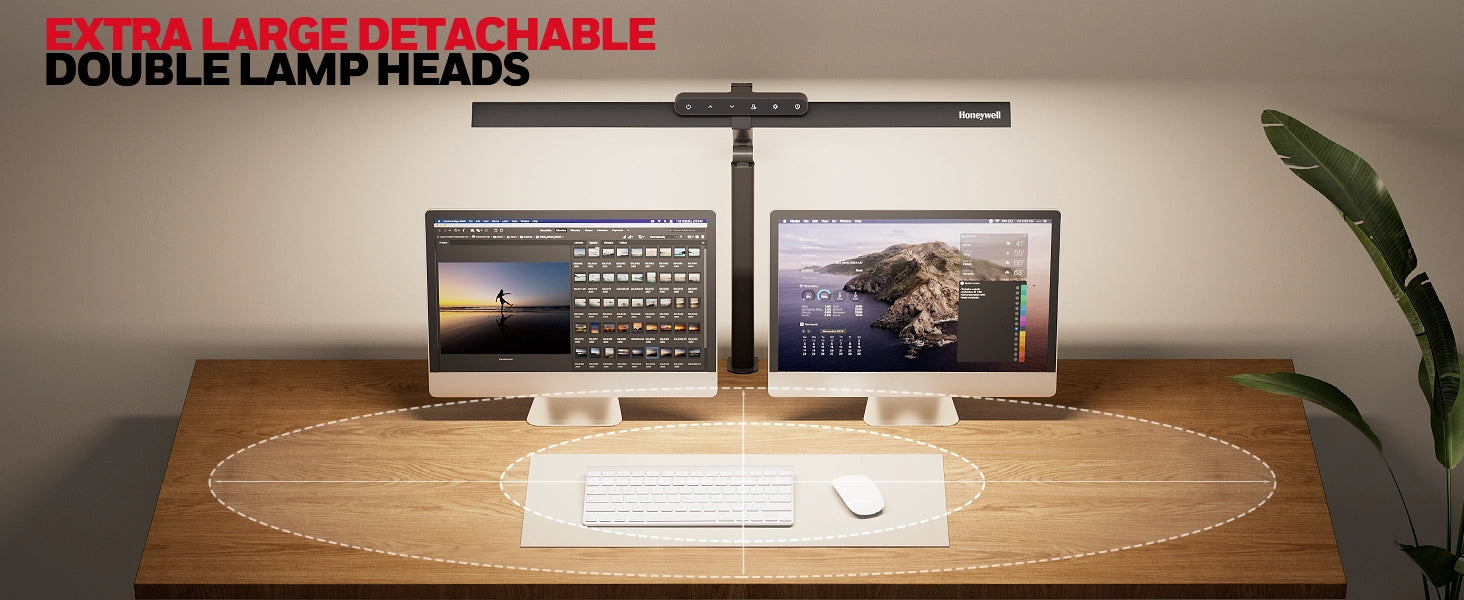
F2: Ambient Environment Control
The F2 floor lamp serves as your ambient lighting foundation, providing consistent background illumination that bridges the gap between different gaming zones. Its adjustable height and wide light distribution make it ideal for creating uniform lighting across larger gaming areas that incorporate multiple devices.
Place the F2 approximately 6-8 feet from your primary gaming position, angled to bounce light off walls or ceilings rather than directly toward screens. This indirect lighting approach eliminates harsh shadows while maintaining the ambient illumination necessary for comfortable multi-device gaming.
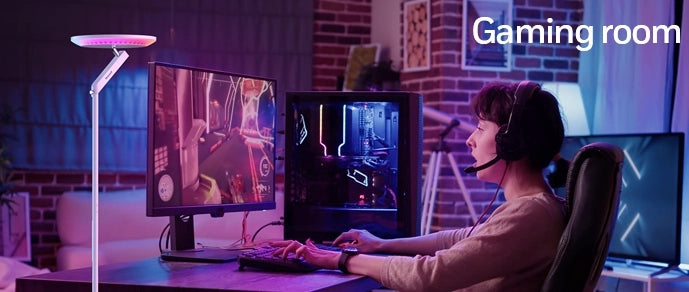
Platform-Specific Lighting Strategies
PC Gaming: Competitive Edge Lighting
PC gaming, particularly competitive titles like Counter-Strike or Valorant, benefits from cooler, higher-intensity lighting that promotes alertness and focus. Configure your HJ1 to 5000K-5700K color temperature with 80-100% brightness for tactical FPS gaming sessions.
To keep the action smooth and your eyes happy, aim for high refresh rates, ideally 180Hz or more. While your monitor handles refresh rates, proper lighting reduces the eye strain that can affect your reaction times during crucial gaming moments.
For RPGs and strategy games, warmer lighting (3000K-4000K) at 60-80% brightness creates a more immersive atmosphere without sacrificing visibility.
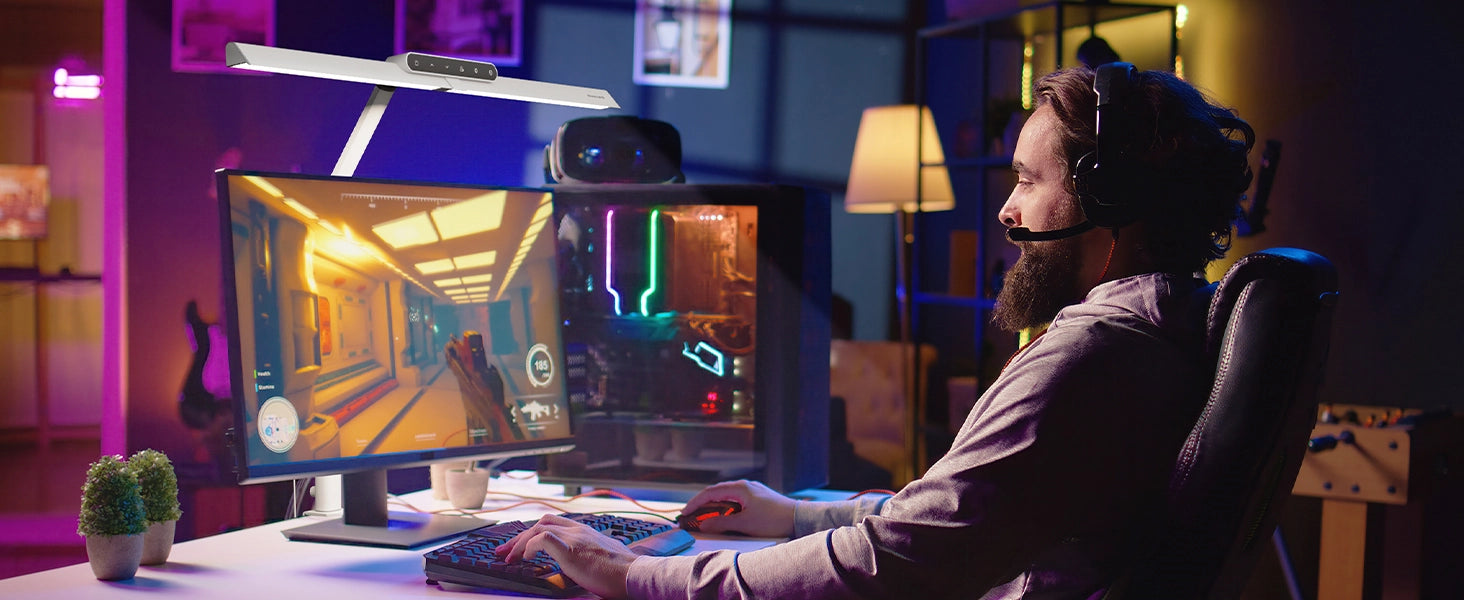
Console Gaming: Comfort and Immersion
Console gaming typically occurs from a greater distance than PC gaming, allowing for more ambient lighting without screen interference. Set your F2 to warm white (2700K-3000K) at moderate intensity (40-60%) to create a cozy gaming atmosphere.
For Nintendo Switch gaming, which often involves transitioning between docked and handheld modes, maintain consistent ambient lighting that doesn't require adjustment when switching between configurations.
PlayStation and Xbox gaming benefit from subtle color-changing capabilities if your F2 model supports RGB functionality. Match ambient colors to game themes—cool blues for sci-fi titles, warm oranges for adventure games—to enhance immersion without overwhelming the gaming experience.
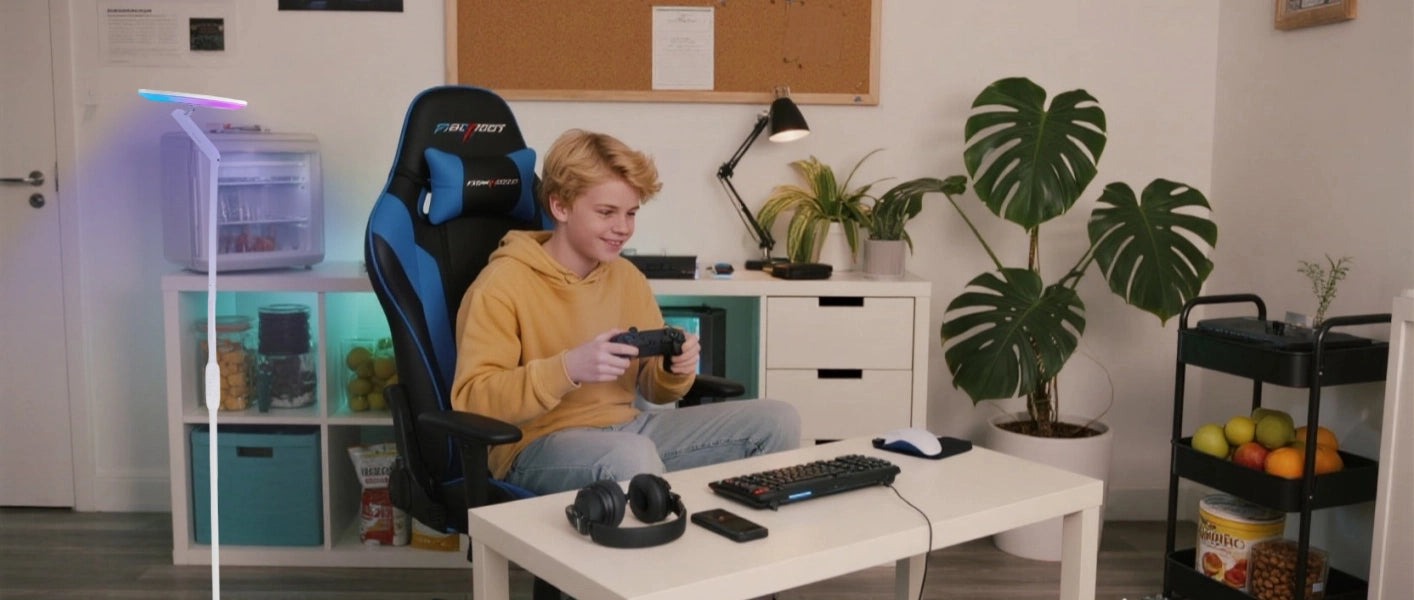
Streaming Setup: Professional Illumination
Streaming adds complexity by requiring both gaming-optimal lighting and camera-friendly illumination. Position your HJ1 to provide consistent facial lighting for your camera while maintaining gaming functionality. The key is creating a lighting setup that looks professional on camera without compromising your gaming performance.
Use the F2 as a background fill light to prevent harsh shadows and create visual depth in your streaming background. Position it behind and to the side of your gaming setup to provide subtle rim lighting that separates you from the background without creating lens flare or hotspots.
Collaborative Lighting Zones: Immersive and Functional Areas
Successful multi-device gaming lighting creates distinct zones that serve different purposes while maintaining visual cohesion.
Primary Gaming Zone
This zone encompasses your main gaming position and primary screens. Your HJ1 should provide the majority of task lighting here, with brightness levels adjusted based on your current gaming activity. For competitive gaming, maintain higher intensity lighting. For casual or story-driven games, reduce intensity to match the game's atmosphere.
Secondary Device Zone
This area includes secondary monitors, console gaming areas, or streaming equipment. The F2 provides ambient lighting for this zone, ensuring consistent illumination without creating interference with your primary gaming activities.
Transition Areas
The space between your primary and secondary zones requires careful lighting consideration. Use the combined output of both the HJ1 and F2 to create smooth lighting transitions that prevent harsh contrast when moving between different gaming activities.
Implementation Examples
The Competitive Gamer's Setup
A typical competitive gaming setup might include a high-refresh PC monitor for esports titles and a console for casual gaming. Position the HJ1 18 inches from your PC monitor, angled at 15 degrees to provide keyboard illumination without screen glare. The F2 should be positioned 7 feet behind and to the left of your setup, providing ambient lighting for console gaming sessions.
During competitive PC gaming, set the HJ1 to 5700K at 90% brightness and the F2 to 4000K at 30% brightness. When switching to console gaming, adjust the F2 to 3000K at 60% brightness while dimming the HJ1 to 20% brightness to prevent light pollution.
The Content Creator's Environment
Streaming gamers need consistent lighting that works for both gaming and camera work. Position your HJ1 slightly forward of your usual gaming position to provide facial lighting for your camera while maintaining gaming functionality. The F2 should be positioned at a 45-degree angle behind your setup to provide background separation and fill lighting.
Maintain consistent color temperature (around 4000K) across both lights to prevent color shifting in your stream footage. Use moderate brightness levels (60-70%) that provide adequate illumination for both gaming and streaming without causing eye strain during long sessions.
Health and Performance Benefits
Proper lighting design directly impacts both gaming performance and long-term health. Research has shown that prolonged gaming without significant breaks can cause eye focus issues, but appropriate lighting can significantly reduce these problems.
The combination of focused task lighting from the HJ1 and ambient lighting from the F2 creates an optimal visual environment that reduces eye strain, improves focus, and enhances gaming performance. This setup also promotes better sleep patterns by providing warm lighting options for evening gaming sessions.
Advanced Lighting Customization
Modern gaming lighting systems offer extensive customization options that go beyond basic brightness and color temperature adjustments. In 2024, expect more all-in-one lighting kits tailored specifically to gamers looking to illuminate their spaces, with the HJ1 and F2 combination representing this trend toward comprehensive lighting solutions.
Consider implementing lighting profiles that automatically adjust based on your current activity. Create profiles for competitive gaming, casual gaming, streaming, and general computer use, each optimized for the specific lighting requirements of that activity.
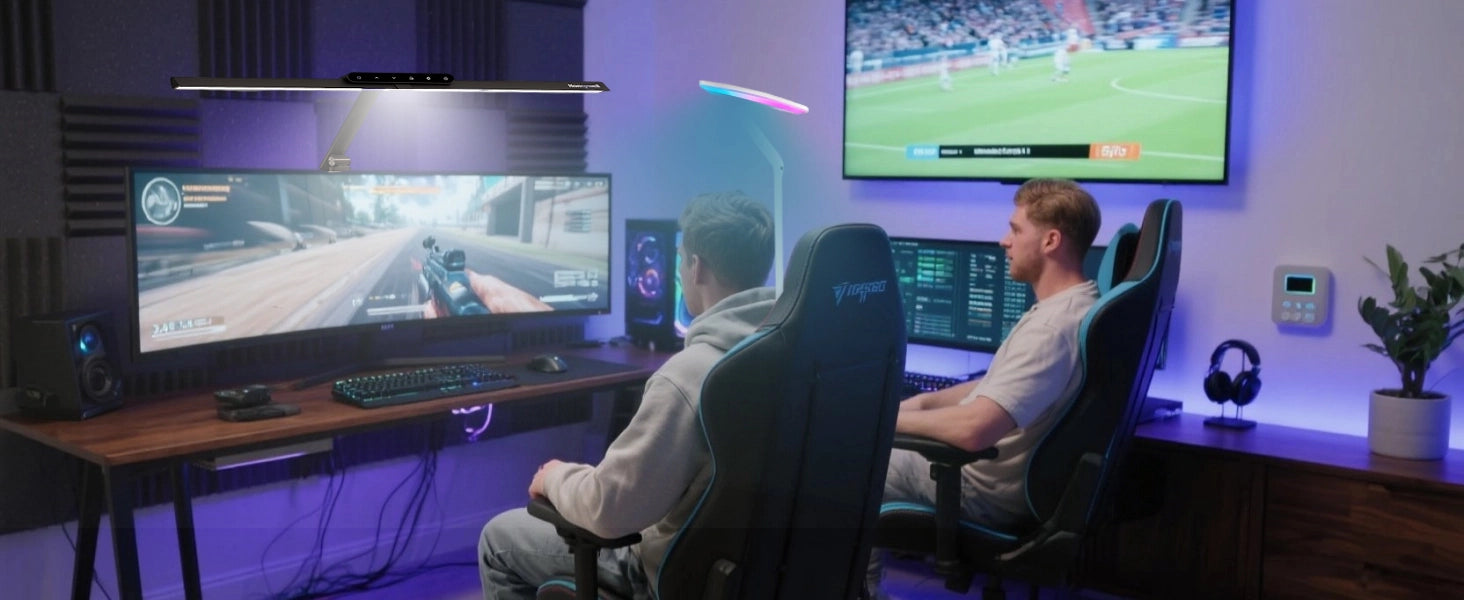
Conclusion
Creating an immersive lighting setup for multi-device gaming requires understanding the unique challenges of modern gaming environments and implementing strategic solutions that address both functional and aesthetic needs. The combination of the Honeywell HJ1 desk lamp and F2 floor lamp provides the flexibility and functionality necessary to create professional-quality lighting that enhances both gaming performance and overall well-being.
By following these guidelines and adapting them to your specific gaming setup, you can create a lighting environment that not only improves your gaming experience but also supports your health and productivity across all your gaming activities. Remember that the best lighting setup is one that adapts to your needs while maintaining consistency and comfort throughout your gaming sessions.

